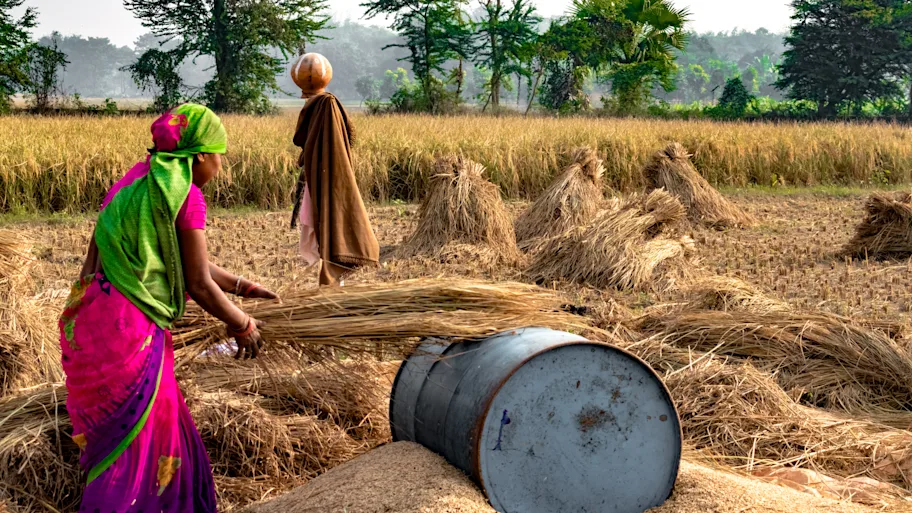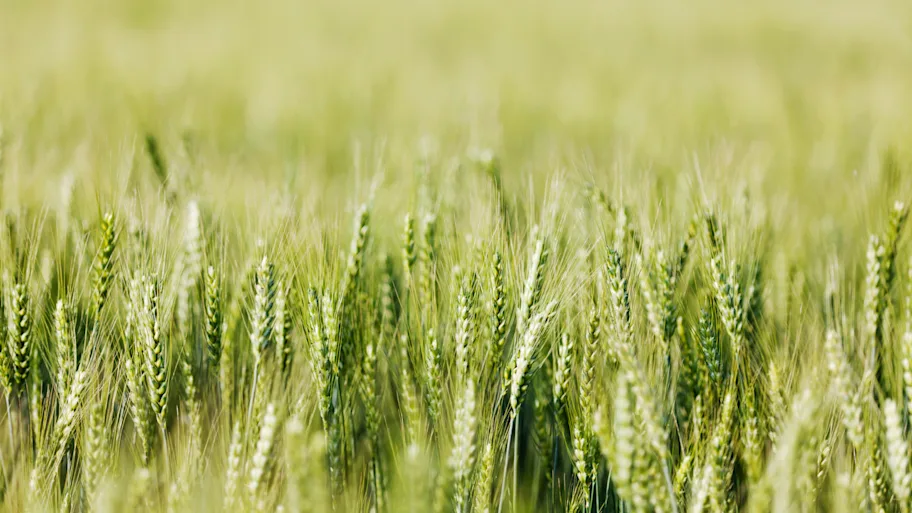
- Science News
- Featured news
- Gene editing and plant domestication essential to protect food supplies in a worsening climate, scientists say
Gene editing and plant domestication essential to protect food supplies in a worsening climate, scientists say

Increasing heat, droughts, floods, and salinization caused by climate change are lowering the amount of edible food produced by our staple crops. Since taking over more land for agriculture isn’t sustainable, our only path forward is to adapt the crops themselves to the new conditions. We have two options—domestication of crops’ wild relatives which are more resilient but have a lower yield, or including resilience genes in modern high-yield crops. Writing in Frontiers in Science, researchers discuss these possibilities and the critical need for more funding, research, and public understanding.
We all need to eat, but the impact of the climate crisis on our crops is throwing the world’s food supply into question. Modern crops, domesticated for high food yields and ease of harvesting, lack the genetic resources to respond to the climate crisis. Significant environmental stresses are reducing the amount of food produced, driving supplies down and prices up. We can’t sustainably take over more land for agriculture, so we need to change our crops—this time to adapt them to the world we have altered. “Agriculture is highly vulnerable to climate change, and the intensity and frequency of extreme events is only going to increase,” said Prof Sergey Shabala of the University of Western Australia, lead author of the article in Frontiers in Science. “Both sustainable agricultural production and global food security will be critically dependent on our ability to create climate-resilient crops.”
Feed the world?
Our current agricultural system produces very large amounts of food through the intensive use of fertilizers and high-production monocultures. This has absorbed the demands of our global population for decades, but we now recognize it as unsustainable. The fertilizers we are reliant on damage the environment when they are produced and pollute the environment when they are used. At the same time, due to the stresses caused by the climate crisis, key staple crops are producing less food.
Even if droughts don’t kill plants, high temperatures lower the yield. To overcome this, farmers irrigate their crops — but irrigation water usually has a high salt content, because freshwater is too much in demand. This raises the salinity of the soil, which lowers the yield of most crops that grow in it. Finally, flooding caused by extreme weather events leaves plants standing in water, creating hypoxic conditions that stop plants absorbing oxygen through their roots. This also lowers the yield of most plants.
“The problem of a sustainable diet has scientific, social, and political facets,” said Shabala. “A broader acceptance of novel technologies and a willingness to accept some cultural shifts is needed. A good example may be rice: it is a main staple food for a high percentage of the population, but many parts of the world may become unsuitable for its production. A switch to other, more resilient, crops may be needed, and I am not sure the public is ready to accept it.”
Many wild plants, including the ancestors and relatives of staple crops, are better able to cope with environmental stresses than modern crops. For our crops to survive climate change, we need to reintroduce those resilient traits.
The seeds of success
Shabala and colleague Prof Michael Palmgren from the University of Copenhagen lay out two options. The first is that we could introduce genes which support resistance to environmental stress into existing high-yield crops. This is easier where there is a close relative to borrow genes from, or where the gene remains in the plant’s DNA but has been deactivated. However, many genes contribute to resistance to environmental stress, and including multiple additional novel traits in a new varietal is difficult.
The second option is that we could domesticate wild plants which are resistant to environmental stresses but have lower yields than modern crops. This has been successful in comparatively simple cases where only small changes need to be made, but it’s unclear whether there are enough simple cases to help assure our food supply.
It’s too early at this point to know which strategy will succeed, the scientists say. However, the same critical elements are essential to the success of both: innovative gene-editing and other precision breeding technologies driven by accurate cell-based phenotyping and public acceptance of the new crops.
“One of the current challenges is to match recent scientific advances with public perception of new technologies,” cautioned Shabala. “The issue is highly politicized and there are significant commercial interests involved. And due to a lack of specific knowledge, the general public cannot distinguish the subtle differences amongst various technologies, and relies on opinions in the media.”
This article is part of the Frontiers in Science multimedia article hub ’Adapting crops for climate change’, which also features an editorial and viewpoint from other eminent experts: Dr Malcolm J. Hawkesford (Rothamsted Research, UK), Prof Francesco Loreto (University of Naples Federico II, Italy), and Dr Giulia Atzori (National Research Council (CNR), Italy)—as well as an explainer with infographics.
REPUBLISHING GUIDELINES: Open access and sharing research is part of Frontiers’ mission. Unless otherwise noted, you can republish articles posted in the Frontiers news site — as long as you include a link back to the original research. Selling the articles is not allowed.
About Frontiers in Science
Frontiers in Science is Frontiers’ multidisciplinary, open-access journal focused on transformational science to accelerate solutions for healthy lives on a healthy planet.
The journal publishes a select number of exceptional peer-reviewed lead articles invited from internationally renowned researchers, whose work addresses key global challenges in human and planetary health. Each lead article is enriched by a diverse hub of content that extends its reach and impact across society – from researchers and policymakers to lay audiences and kids.
For more information, visit www.frontiersin.org/science, follow @FrontScience on X, and follow Frontiers in Science on LinkedIn.






